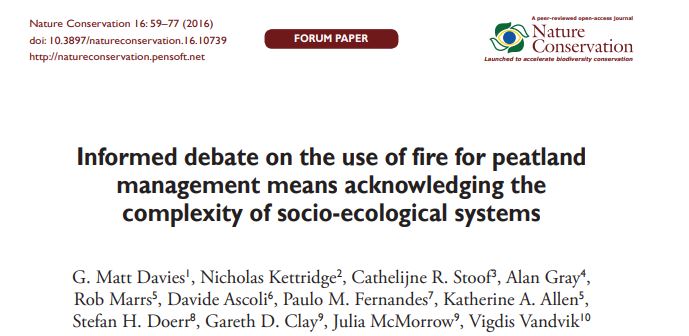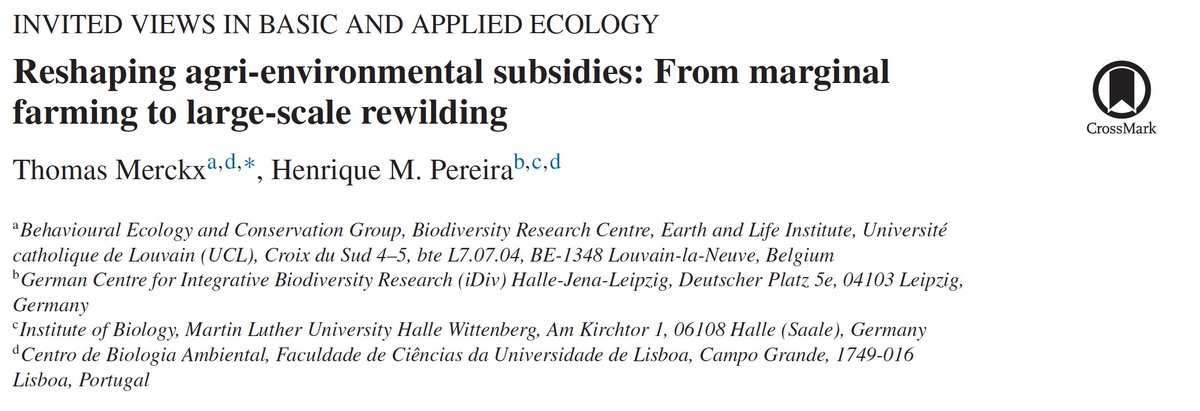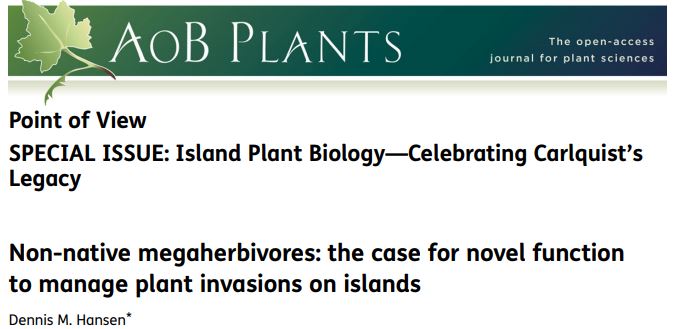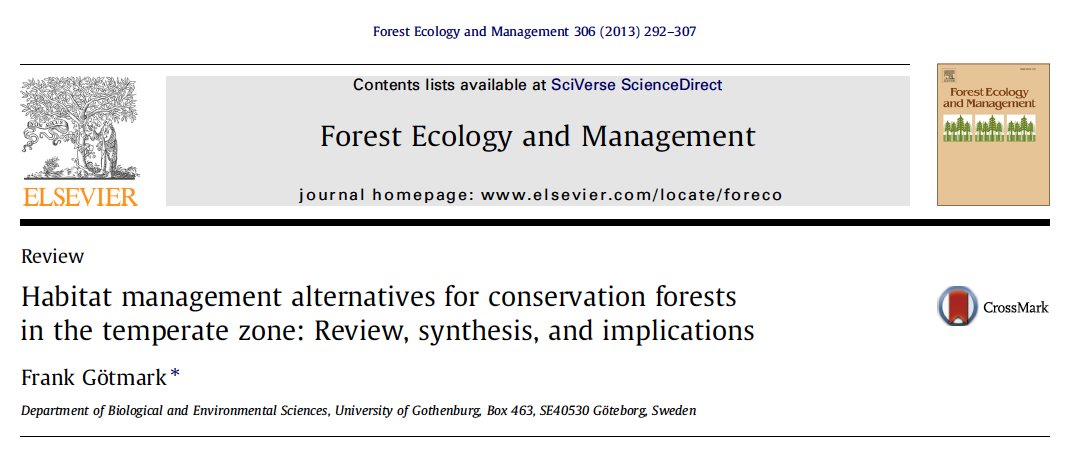
1/ A debate on the approach of management and the distinction between anthropogenic and ‘natural’ landscapes is the topic of #rewildingscience today. This centres around the use of fire in peatland management and how we approach ecosystem understanding 

2/ The use of fire in peatland & heaths is steeped in political, social, and economic debate. Whilst it is difficult and, in some cases, inadvisable to tease-out these points from habitat management, it is important to conduct unbiased ecological assessments for certain practices
3/ Here, the authors aim to examine the trade-offs in land-management within peatlands/heaths. “choosing the ‘right’ ecosystem is difficult…in a landscape with a long history of human influence”. Whether that be #rewilding or a combination of practices is still being discussed
4/ Heathland and peatland ecosystems occur naturally in NW Europe, however across British ranges they are fundamentally anthropogenic landscapes whose structure is derived from Millenia of low-intensity management…
5/ How these are managed now; grazing and burning, not only affects the biodiversity and ecosystem services but has also come under political and social scrutiny. This paper addresses how we view this debate through the following sections…
6/ Understanding fire effects on peatlands, the ecological value of moorland landscapes, the importance of scale, and how decisions can be made in an anthropogenic landscape. This last point in particular is often central to the debate of #rewilding
7/ The authors point out how current debate lends to a dichotomous choice between banning burning or continuing with intensive management. They argue that this is an oversimplification of the flexibility of fire management as a tool and how it can be used to ecological effect
8/ The original paper focused on how fire effects these ecosystems. When there is a shift in management there needs to be an understanding of the range of ecosystem effects current regimes produce. When this is lacking an Adaptive Management approach should be used… 

9/ … This emphasises the need for an inter-related ecological structure where uncertainty is identified, alongside ecologically-justified, testable hypothesis about the outcome of management change
10/ for example, prescribed burning has been known to influence behaviour of wild and domestic grazing animals. But there is variation in effects based on overstocking, poorly times grazing and burning vegetation that is too young for heather to have recovered
11/ There is therefore the potential for variability in fire regimes as well as different types of fire, such as managed vs wild. For this reason, they write, it is simplistic to view one as ‘good’ or ‘bad’ when taken in context of a wider disturbance regime
12/ #Rewilding of the uplands, including establishment of woodland/forest with a shift away from anthropogenic-derived ecosystems, in general is a viable option. However, the authors suggest that it would be wrong to suggest heathlands and peatlands hold little ecological value
13/ There need not be a choice between these ecosystems and forests at a national or landscape scale. Heathland ecosystems have conservation recognition in the UK and Europe. Whether current regimes are appropriate for ecosystem services desired from the uplands is an open debate
14/ Regarding scale, it is important to view these habitats at multiple taxanomic, spatial and temporal levels. For example, short-term effects of grazing removal on uplands has shown initial declines in species richness, but effects were different at higher elevations
15/ As such there is not necessarily a ‘right’ management regime or landscape depending on the scale you are looking at e.g. whilst pinewoods contain wonderful diversity, species diversity is not the only metric where ecosystems are evaluated…
16/ This can include diversity of communities and habitats at a landscape scale and can often be species specific. For example, response of species richness to birch colonization of moorland (#rewilding?) depends upon the species one considers…
17/ Heterogeneity in habitat structure associated with burning can have important effects. Globally rare temperate peatlands that support carbon storage and sequestration can also providing habitats for breeding birds. Would these be displaced with conversion to woodland?
18/ Here the authors reiterate that they do not suggest that grouse moors/moorlands are generally the correct ecosystem for the uplands. They merely point out the ecological value in these systems, whose presence can support a structurally diverse, holistically-managed landscape
19/ None of this prevents or argues against the desirability of alterations to traditional fire use strategies, or the use of #rewilding in some parts of the uplands. Rather there is scope for diversity of management in landscapes that have been influenced by humans for Millenia
20/ In this sense, finding the right balance between different habitats such as woodland and moorland, whilst minimising fragmentation will require landscape-scale approaches to management. This is an ecological, economic, and philosophical decision
21/ This may seem contrary to the point that politics should be negated in ecological assessments. Indeed they can play a role in determining land-management priorities. They instead suggest that when discussing ecological dynamics there should be an understanding of biases
22/ They suggest a collaborative, inclusive, and balanced approach to landscape scale planning that will reduce conflicts and more successfully leverage human and financial resources of heathland and peatland stakeholders
23/ The authors conclude with reiterating that an ecological approach to fire use needs to be based on an Adaptive Management principle and scientific evidence. Wherever you land on the debate “we all care passionately about the future of these landscapes”
24/ This was a very interesting read and while I hope I did it justice, I was not able to fully cover everything discussed in the paper. So by all means follow the link, have a read, and join in the debate! natureconservation.pensoft.net/article/10739/
25/ @Nature_based @OwenMiddleton @DandoTom @nkettridge @dr_firelady @robmarrs1 @FireLab_UTAD @Kaallen19 @doerr_s @garethdclay @VVandvik
• • •
Missing some Tweet in this thread? You can try to
force a refresh





